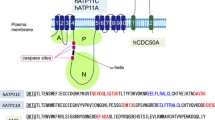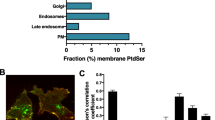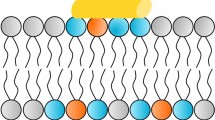Abstract.
The asymmetric phospholipid distribution in plasma membranes is normally maintained by energy-dependent lipid transporters that translocate different phospholipids from one monolayer to the other against their respective concentration gradients. When cells are activated, or enter apoptosis, lipid asymmetry can be perturbed by other lipid transporters (scramblases) that shuttle phospholipids non-specifically between the two monolayers. This exposes phosphatidylserine (PS) at the cells’ outer surface. Since PS promotes blood coagulation, defective scramblase activity upon platelet stimulation causes a bleeding disorder (Scott syndrome). PS exposure also plays a pivotal role in the recognition and removal of apoptotic cells via a PS-recognizing receptor on phagocytic cells. Furthermore, expression of PS at the cell surface can occur in a wide variety of disorders. This review aims at highlighting how PS expression in different cells may complicate a variety of pathological conditions, including those that promote thromboembolic complications or produce aberrations in apoptotic cell removal.
Similar content being viewed by others
Author information
Authors and Affiliations
Corresponding author
Additional information
Received 26 November 2004; received after revision 3 January 2005; accepted 10 January 2005 Available online 09 March 2005
Rights and permissions
About this article
Cite this article
Zwaal, R.F.A., Comfurius, P. & Bevers, E.M. Surface exposure of phosphatidylserine in pathological cells. CMLS, Cell. Mol. Life Sci. 62, 971–988 (2005). https://doi.org/10.1007/s00018-005-4527-3
Issue Date:
DOI: https://doi.org/10.1007/s00018-005-4527-3




